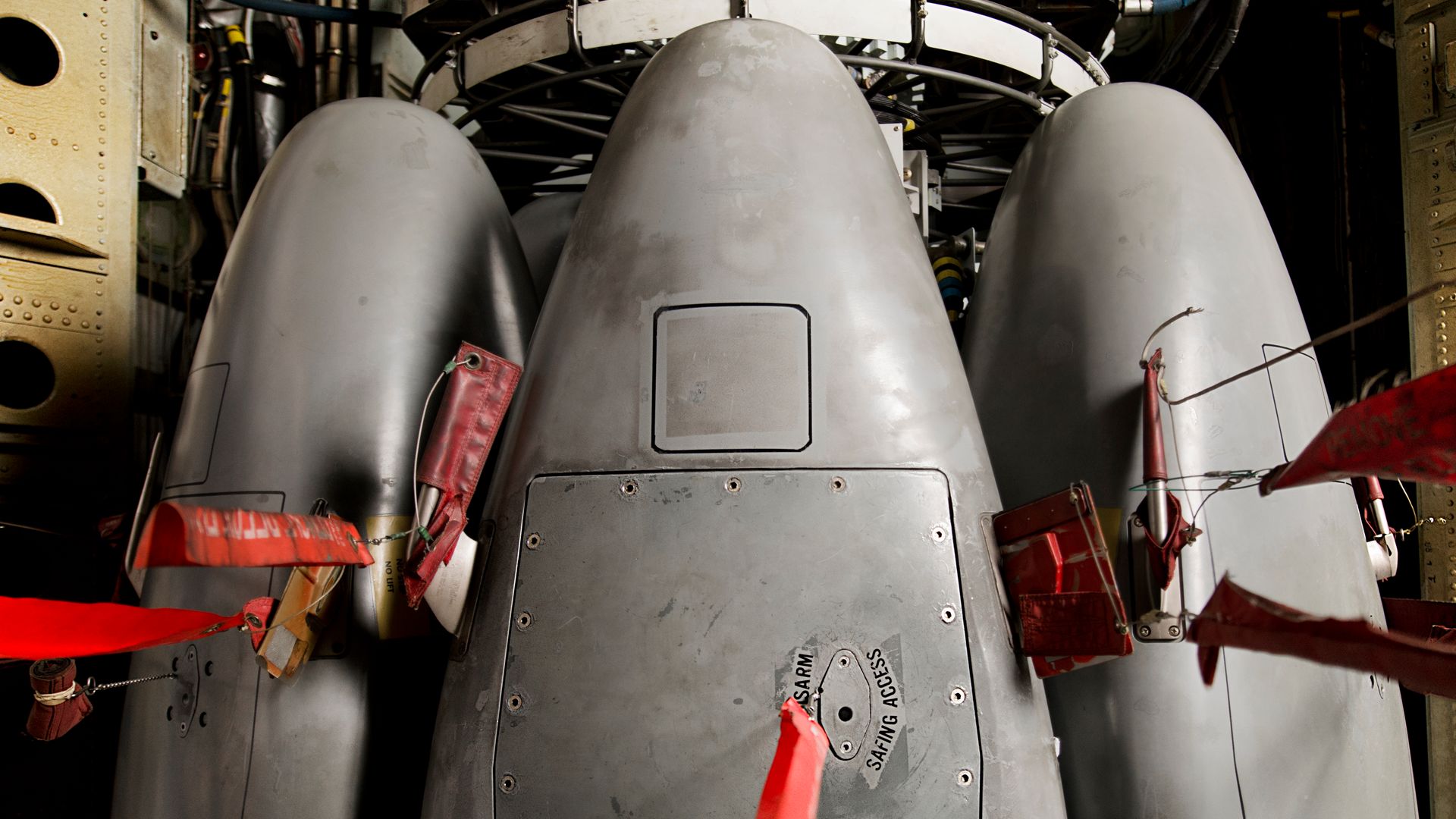
THE UNITED STATES AIR FORCE IS BUYING 1000 NUCLEAR CAPABLE CRUISE MISSILES. THE NEW MISSILES ARE OFFICIALLY CALLED LONG RANGE STANDOFF WEAPONS AND SHOULD OFFER COMMANDERS MORE OPTIONS WHEN CONSIDERING POSSIBLE NUCLEAR STRIKES AGAINST ENEMY FACTIONS.
THE UNITED STATES NUCLEAR ARSENAL IS BROKEN UP INTO THREE DISTINCT AREAS OF DELIVER KNOWN AS THE TRIAD. INTERCONTINENTAL BALLISTIC MISSILES CAN BE LAUNCHED FROM STATIC MISSILE SILOS OR SUBMARINES, AND BOMBERS LIKE THE B-52 STRATOFORTRESS ALSO CARRY AIR-LAUNCHED NUCLEAR WEAPONS LIKE GUIDED BOMBS.
AS THE NEWEST ENTRANT INTO THE TRIAD, THE LRSO WILL ALSO BE CARRIED BY THE B-52, REPLACING THE BOMBERS AGM-86 AIR LAUNCHED CRUISE MISSILES. THE AIR FORCE’S NEWEST STEALTH BOMBER, THE B-21 RAIDER, WILL ALSO CARRY LRSOs ONCE ITS OPERATIONAL.
WHILE THE AIR FORCE CONTRACTED TO PURCHASE 1000 LRSOs, NOT ALL OF THEM WILL BE ARMED WITH A NUCLEAR WARHEADS. SOME WILL BE USED FOR TESTING, OTHERS FOR BACKUP.
THE NUCLEAR-ARMED LRSOs WILL CARRY THE W80-4 WARHEAD. IT’S BASED ON THE W80-1 DESIGN AND FEATURES THE SAME “DIAL A YIELD” CAPABILITY. W80-4s CAN BE SET TO PRODUCE A RELATIVELY SMALL 5-KILOTON BLAST OR A MUCH LARGER 150-KILOTON BLAST. FOR COMPARISON’S SAKE, THE NUCLEAR BOMB DROPPED ON HIROSHIMA HAD A 15-KILOTON YIELD.
LIKE ALL OF THE UNITED STATES’ NUCLEAR WEAPONS, THE PENTAGON SAYS THE LRSO IS MEANT AS A DETERRENT. IN TERMS OF STRATEGY, THE LRSO WILL PROVIDE A NUCLEAR RESPONSE OPTION WHEN FLYING FIGHTERS OR BOMBERS INTO AN AREA OF OPERATION ISN’T POSSIBLE. THE LRSO HAS A RANGE OF AT LEAST 1500 MILES, MEANING A B-52 CAN FLY TO THE EDGE OF AN ENEMY’S AIR DEFENSE RANGE, LAUNCH THE LRSOs, AND RETURN TO BASE WITHOUT EVER COMING INTO DIRECT CONTACT WITH THE ENEMY.
THE LRSO IS NOT WITHOUT ITS CRITICS. THERE ARE CONCERNS DEPLOYING LOWER YIELD NUCLEAR WEAPONS COULD ALSO LOWER THE THRESHOLD OF NUCLEAR ENGAGEMENT, MAKING USE OF THE WEAPONS MORE LIKELY. ALSO, SOME CRITICS SAY NUCLEAR-ARMED CRUISE MISSILES COULD BE MISTAKEN FOR CONVENTIONAL WEAPONS BY ENEMY FORCES, PROMPTING A NUCLEAR RESPONSE.
FORMER SECRETARY OF DEFENSE GENERAL JAMES MATTIS TOLD CONGRESS IN ADDITION TO LRSO’S GIVING COMMANDERS MORE TACTICAL POSSIBILITIES, THE LOWER-YIELD,STAND-OFF STRIKE OPTION COULD ALSO BRING RUSSIA BACK TO THE NUCLEAR NEGOTIATING TABLE AFTER MOSCOW VIOLATED THE INF TREATY. AT THE VERY LEAST, LRSOs SHOULD MAKE RUSSIA, CHINA, AND OTHER ADVERSARIES THINK TWICE ABOUT DEPLOYING TACTICAL NUCLEAR WEAPONS WITHOUT SOME SORT OF NUCLEAR RESPONSE FROM THE UNITED STATES.











